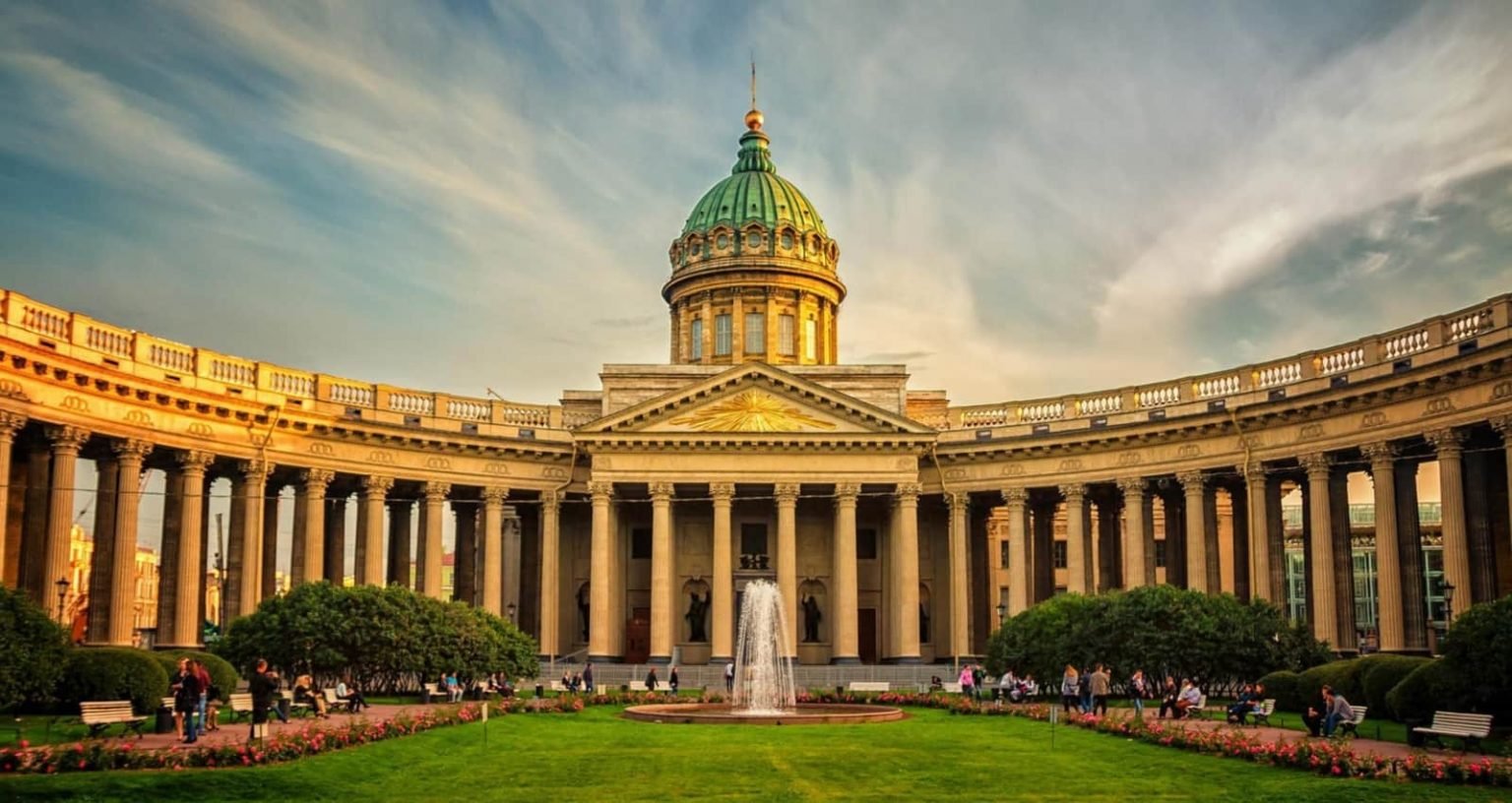What will a visit to the city of Saint Petersburg be without visiting its most beautiful and iconic cathedrals?
In this article we will take you to visit the most emblematic cathedrals with a brief description.
Saint Isaac’s Cathedral
Before the modern Saint Isaac’s Cathedral, a jewel of the cathedrals in Saint Petersburg, 3 churches had already been built in its place. The first was too small, the second was placed on a site with poor soil, the third was so poorly designed that it caused ridicule.
In 1816, Alexander I chose the young Auguste Montferrand of France as the architect of the church. The emperor liked the project proposed by the Frenchman so much that he immediately appointed him in charge.
Construction lasted for 40 long years, but the result exceeded all expectations.
The monumental building quickly became one of the architectural dominants of Saint Petersburg and the main temple of the city.
After the Revolution and into the Soviet era, the cathedral was devastated and damaged during the Great Patriotic War, but this did not prevent its original appearance from being preserved.
Since 1948, Saint Isaac’s Cathedral has been given museum status, but church services are still held inside on Sundays and holidays.
Kazan Cathedral jewel of the cathedrals in St. Petersburg
Kazan Cathedral was built to house the reproduction of the icon of the Kazan Mother of God. The icon best known and revered by the Russian Orthodox.
The cathedral was built in just 10 years, and in 1811 it was solemnly consecrated.
A year later, the Patriotic War broke out, after which the Kazan Cathedral took on a new meaning and became a place of military glory. The great commander Mikhail Kutuzov still rests within its walls.
It is noteworthy that this iconic cathedral in Soviet times was turned into a museum of history and atheism. The interior decoration was badly damaged after the revolution. Even the silver taken from there was estimated in tons that unfortunately melted and disappeared without a trace.
However, in the decades after the disappearance of the USSR, and thanks to the work of restorers, it was possible to partially restore the 19th-century interiors.
Church of the Savior on Spilled Blood
The Church of the Savior on Spilled Blood stands out remarkably against the background of the architectural ensemble of St. Petersburg, boldly following the established traditions in Orthodox architecture.
However, according to the meaning given by the name of this temple, it can be deduced that the reason for its construction is sad. The temple was built where, on March 13, 1881, the blood of the Russian emperor Alexander II was spilled, who died in the same place at the hands of terrorists.
When Emperor Alexander III’s son ascended the throne, he ordered the construction of a temple on the site of the assassination, specifying two main requirements; the building is to be in the Russian style and a separate chapel is to be built on the spot where blood was spilled.
For the construction of the temple, the project of Alfred Parland was chosen, and in 1907 the temple was built and consecrated.
After the Revolution, as happened everywhere, the temple was turned into a warehouse and it was intended to be destroyed later, but, fortunately, this did not happen.
The Church of the Savior on Blood is beautiful not only on the outside, but also on the inside; multi-colored marble and Ural gems make its interior truly unique.
Smolny Cathedral
Empress Elizaveta Petrovna, who lived in Smolny Palace all her childhood, wished to build a monastery on its place, where she would spend her last days in peace and quiet.
A lot of money was allocated for the construction, and the works went at a frantic pace until the war with Prussia began and, consequently, the lack of financing.
Unfortunately, Elizaveta Petrovna died before the construction was completed.
The main building of the monastery was the Smolny Cathedral, a majestic temple built according to the project of the Russian-Italian architect Bartolomeo Rastrelli. The architect chose the baroque as the dominant style, maintaining the Russian traditions in the decoration of the domes. However, Rastrelli’s plan has not been fully realized which left the temple incomplete.
In the future, it is planned to complete what the architect did not have time to do during his lifetime, namely the bell tower.
If the project is implemented, the Smolny Cathedral will become the highest building in the city center.
Peter and Paul Fortress
The Peter and Paul Fortress is the place where Saint Petersburg was born and began to grow in 1703.
Built for defense, it did not participate in any battles, thanks to which it was perfectly preserved.
Of course, now the fortress looks different than it did 300 years ago, but the reason for this was constant modernization due to the requirements of each era.
Most of the time, the Peter and Paul Fortress was a prison. It was closed in 1920, and 4 years later a museum was founded there.
The temple was one of the most important buildings in all Russian cities, so, along with the fortress, the Peter and Paul Cathedral was built in 1703. It is inside the temple that all the emperors of the Russian Empire are buried , from Pedro I to Nicholas II, with the exception of Pedro II and Ivan VI.
Now the Peter and Paul Cathedral is under the jurisdiction of the city history museum, however, services inside are held to this day.
Visit the cathedrals in Saint Petersburg
In our itineraries of excursions in St. Petersburg; We pay special attention to visiting the most symbolic places in the city and especially the palaces, museums and cathedrals.
Do you want to enjoy your trip to Russia with professional guides? Contact Us.



